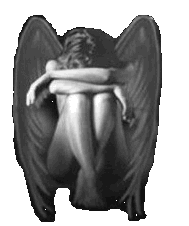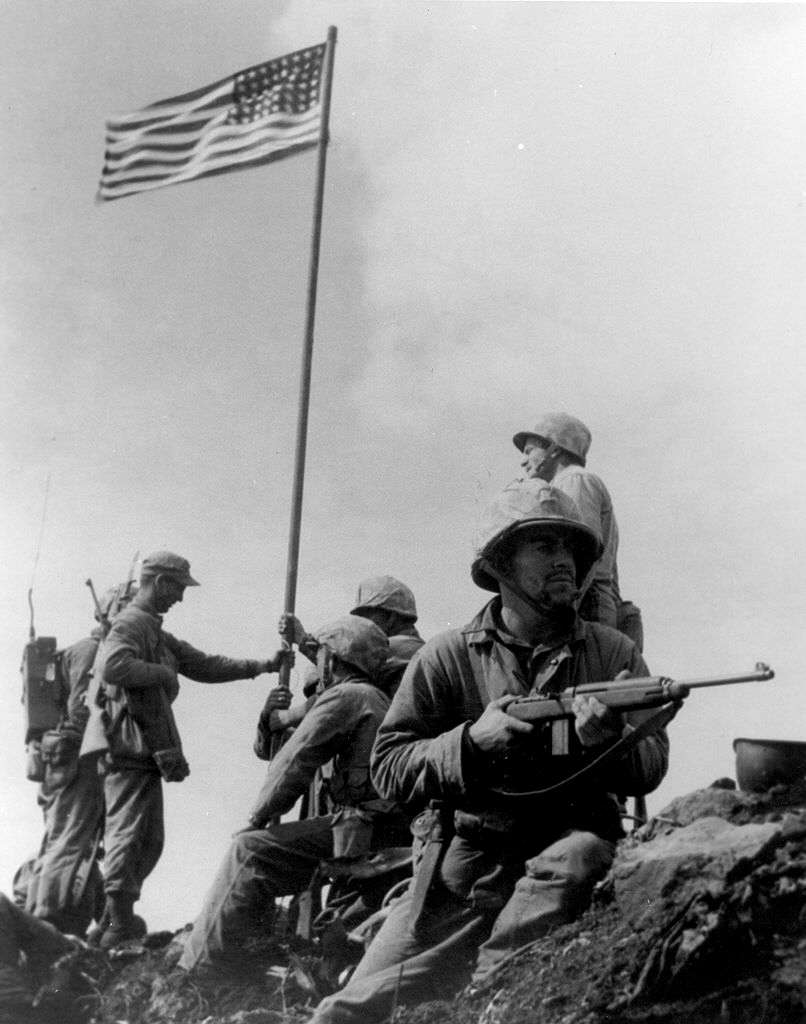 |
Staff Sgt. Lou Lowery's most widely circulated picture of the first American flag flown on Mount Suribachi (after the flag was raised).
Left to right: 1st Lt. Harold G. Schrier (crouched behind radioman), Pfc. Raymond Jacobs (radioman), Sgt. Henry "Hank" Hansen (soft cap, holding flagstaff), Pvt. Phil Ward (helmeted, with two hands on flagstaff), Platoon Sgt. Ernest Thomas (seated), PhM2c. Bradley (helmeted, standing above Thomas with hand on flagstaff), Pfc. James Michels (holding M1 carbine), and Cpl. Charles W. Lindberg (standing above Michels). |
| Raising the first Flag: |
 |
No copyright, see Wikipedia |
A U.S. flag was first raised atop Mount Suribachi soon after the mountaintop was captured at around 10:20 on February 23, 1945
Lieutenant Colonel Chandler Johnson, commander of the 2nd Battalion, 28th Marine Regiment, 5th Marine Division, ordered Marine Captain Dave Severance, commander of Easy Company, 2nd Battalion, 28th Marines, to send a platoon to seize and occupy the crest of Mount Suribachi. First Lieutenant Harold G. Schrier, executive officer of Easy Company, who had replaced the wounded Third Platoon commander, John Keith Wells, volunteered to lead a 40-man combat patrol up the mountain. Lieutenant Colonel Johnson (or 1st Lieutenant George G. Wells, the battalion adjutant, whose job it was to carry the flag) had taken the 54-by-28-inch/140-by-71-centimeter flag from the battalion's transport ship, USS Missoula, and handed the flag to Schrier. Johnson said to Schrier, "If you get to the top, put it up." Schrier assembled the patrol at 8 AM to begin the climb up the mountain.
Despite the large numbers of Japanese troops in the immediate vicinity, Schrier's patrol made it to the rim of the crater at about 10:15 am, having come under little or no enemy fire, as the Japanese were being bombarded at the time. The flag was attached by Schrier and two Marines to a Japanese iron water pipe found on top, and the flagstaff was raised and planted by Schrier, assisted by Platoon Sergeant Ernest Thomas and Sergeant Oliver Hansen at about 10:30 am (on February 25, during a CBS press interview aboard the flagship USS Eldorado about the flag-raising, Thomas stated that he, Schrier, and Hansen (platoon guide) had actually raised the flag). The raising of the national colors immediately caused a loud cheering reaction from the Marines, sailors, and coast guardsmen on the beach below and from the men on the ships near the beach. The loud noise made by the servicemen and blasts of the ship horns alerted the Japanese, who up to this point had stayed in their cave bunkers. Schrier and his men near the flagstaff then came under fire from Japanese troops, but the Marines quickly eliminated the threat. Schrier was later awarded the Navy Cross for volunteering to take the patrol up Mount Suribachi and raising the American flag, and a Silver Star Medal for a heroic action in March while in command of D Company, 2/28 Marines on Iwo Jima.
Photographs of the first flag flown on Mount Suribachi were taken by Staff Sergeant Louis R. Lowery of Leatherneck magazine, who accompanied the patrol up the mountain, and other photographers. Others involved with the first flag-raising include Corporal Charles W. Lindberg, Privates First Class James Michels and Raymond Jacobs, Private Phil Ward, and Navy corpsman John Bradley. This flag was too small, however, to be easily seen from the northern side of Mount Suribachi, where heavy fighting would go on for several more days. |
| Harold George Schrier |
| No Picture |
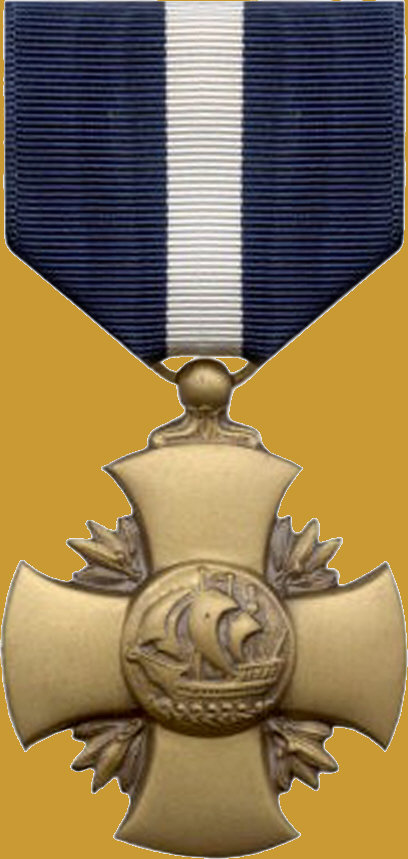 |
Rank:
Awards:
Date of Birth:
Date of Death:
Age:
Unit:
Cemetery: |
Lieutenant colonel
Navy Cross
17 October 1916, Corder, Missouri
03 June 1971, Bradenton, Florida
54
2nd Battalion, 28th Marines
|
| Navy Cross citation |
The President of the United States takes pleasure in presenting the NAVY CROSS to
First Lieutenant Harold G. Schrier
United States Marine Corps for extraordinary heroism as Executive Officer of Company E, Second Battalion, Twenty-Eighth Marines, Fifth Marine Division, in action against enemy Japanese forces on Iwo Jima, Volcano Islands, on 23 February 1945. On the morning of 23 February when his combat team had advanced to the base of Mount Suribachi after four days of severe fighting, First Lieutenant SCHRIER volunteered to lead a forty-man patrol up the steep slopes of the mountain. Quickly organizing his patrol and placing himself at its head, he began the tortuous climb up the side of the volcano, followed by his patrol in single file. Employing the only known approach, an old Japanese trail, he swiftly pushed on until, covered by all the supporting weapons of his battalion, he gained the top of the mountain despite hostile small arms and artillery fire. Forced to engage the remaining enemy in a sharp fire fight, he overcame them without loss in his patrol and occupied the rim of the volcano. Although still under enemy sniper fire, First Lieutenant SCHRIER, assisted by his Platoon Sergeant, raised the National Colors over Mount Suribachi, planting the flagstaff firmly on the highest knoll overlooking the crater, the first American flag to fly over any land in the inner defenses of the Japanese Empire. His inspiring leadership, courage and determination in the face of overwhelming odds upheld the highest traditions of the United States Naval Service. |
| For more information see H. G. Schrier on Wikipedia |
| John Keith Wells |
| No Picture |
 |
Rank:
Awards:
Date of Birth:
Date of Death:
Age:
Unit:
Cemetery: |
Lieutenant
Navy Cross
05 February 1922
11 February 2016, Arvada, Colorado
93
|
| For more information see J. K. Wells on Wikipedia |
| Ernest Ivy Thomas Jr. |
| No Picture |
 |
Rank:
Awards:
Date of Birth:
Date of Death:
Age:
Unit:
Cemetery: |
Platoon Sergeant
Navy Cross
10 March 1924, Tampa, Florida
03 March 1945 on Iwo Jima
20
2nd Battalion, 28th Marines
Monticello, Florida |
| Navy Cross citation |
The Navy Cross is presented posthumously to
Ernest I. Thomas jr.
United States Marine Corps Reserve
for extraordinary heroism as a Rifle Platoon Leader serving with Company E, Second Battalion, Twenty-Eighth Marines, Fifth Marine Division, during action on enemy Japanese-held Iwo Jima, Volcano Islands, 21 February 1945. When his platoon leader was wounded, Platoon Sergeant Thomas assumed command and, before supporting tanks arrived to cover him, led his men in an assault on a fanatically defended and heavily fortified hostile sector at the base of Mount Suribachi. With the tanks unable to proceed over the rough terrain beyond positions 75 to 100 yards at the rear of our attacking forces, Platoon Sergeant Thomas ran repeatedly to the nearest tank, and in a position exposed to heavy and accurate machine-gun and mortar barrages, directed the fire of the tanks against the Japanese pillboxes which were retarding his platoon's advance. After each trip to the tanks, he returned to his men and led them in assaulting and neutralizing enemy emplacements, continuing to advance against the Japanese with a knife as his only weapon after the destruction of his rifle by hostile fire. Under his aggressive leadership, the platoon killed all the enemy in the sector and contributed materially to the eventual capture of Mount Suribachi. His daring initiative, fearless leadership and unwavering devotion to duty were inspiring to those with whom he served and reflect the highest credit upon Platoon Sergeant Thomas and the United States Naval Service. |
| For more information see E. I. Thomas on Wikipedia |
| Henry Oliver Hansen |
| No Picture |
 |
Rank:
Awards:
Date of Birth:
Date of Death:
Age:
Unit:
Cemetery: |
Sergeant
Purple Heart
14 December 1919, Boston, Massachusetts
01 March 1945 on Iwo Jima
25
2nd Battalion, 28th Marines
National Memorial Cemetery of the Pacific
Honolulu, Hawaii |
| For more information see H. O. Hansen on Wikipedia |
| Louis R. Lowery |
| No Picture |
 |
Rank:
Awards:
Date of Birth:
Date of Death:
Age:
Unit:
Cemetery: |
Captain
Purple Heart
24 July 1916
15 April 1987
70
2nd Battalion, 28th Marines
Quantico National Cemetery, Triangle, Virginia |
| For more information see L. R. Lowery on Wikipedia |
| Charles W. Lindberg |
| No Picture |
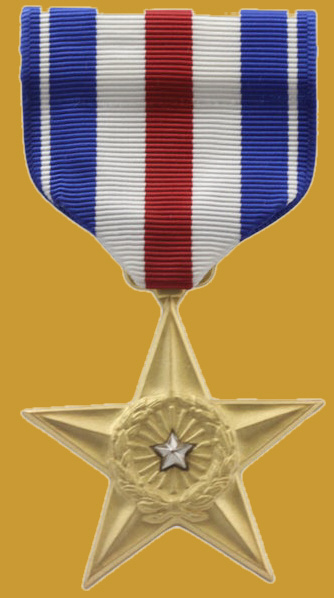 |
Rank:
Awards:
Date of Birth:
Date of Death:
Age:
Unit:
Cemetery:
|
Corporal
Silver Star
26 June 1920, Grand Forks, North Dakota
24 June 2007
86
2nd Battalion, 28th Marine
82nd Airborne Division
Forrest General Hospital Hattiesburg, Mississippi |
| Silver Star Medal citation |
For conspicuous gallantry and intrepidity while serving as Flame Thrower Operator of Company E, Second Battalion, Twenty-eight Marines, Fifth Marine Division, in action against enemy Japanese forces on Iwo Jima, Volcano Islands, from 19 February to 1 March 1945. Repeatedly exposing himself to hostile grenades and machine-gun fire in order that he might reach and neutralize enemy pill-boxes at the base of Mount Suribachi, Corporal Lindberg courageously approached within ten or fifteen yards of the emplacements before discharging his weapon, thereby assuring annihilation of the enemy and the successful completion of his platoon's mission. As a member of the first combat patrol to scale Mount Suribachi, he courageously carried his flame thrower to the steep slopes and assisted in destroying the occupants of the many caves found in the rim of the volcano, some of which contained as many as seventy Japanese. While engaged in an attack on hostile cave positions on March 1, he fearlessly exposed himself to accurate enemy fire and was subsequently wounded and evacuated. By his determinations in manning his weapon, despite its weight and the extreme heat developed in operation, Corporal Lindberg greatly assisted in securing his company's position. His courage and devotion to duty were in keeping with the highest traditions of the United States Naval Service. |
| For more information see C. W. Lindberg on Wikipedia |
| James R. Michels |
| No Picture |
 |
Rank:
Awards:
Date of Birth:
Date of Death:
Age:
Unit:
Cemetery: |
Corporal
Purple Heart
18 January 1918, Chicago, Illinois
17 January 1982, Riverside, Illinois
63
2nd Battalion, 28th Marines
Queen of Heaven Cemetery, Hillside, Illinois |
| For more information see J. R. Michels on Wikipedia |
| Raymond E. Jacobs |
| No Picture |
 |
Rank:
Awards:
Date of Birth:
Date of Death:
Age:
Unit:
Cemetery: |
Private first Class
Purple Heart
24 January 1926, Bridgeport, Connecticut
29 January 2008, Redding, California
82
2nd Battalion, 28th Marines
Northern California Veterans Cemetery,
Igo, California |
| For more information see R. E. Jacobs on Wikipedia |
| John Henry Bradley |
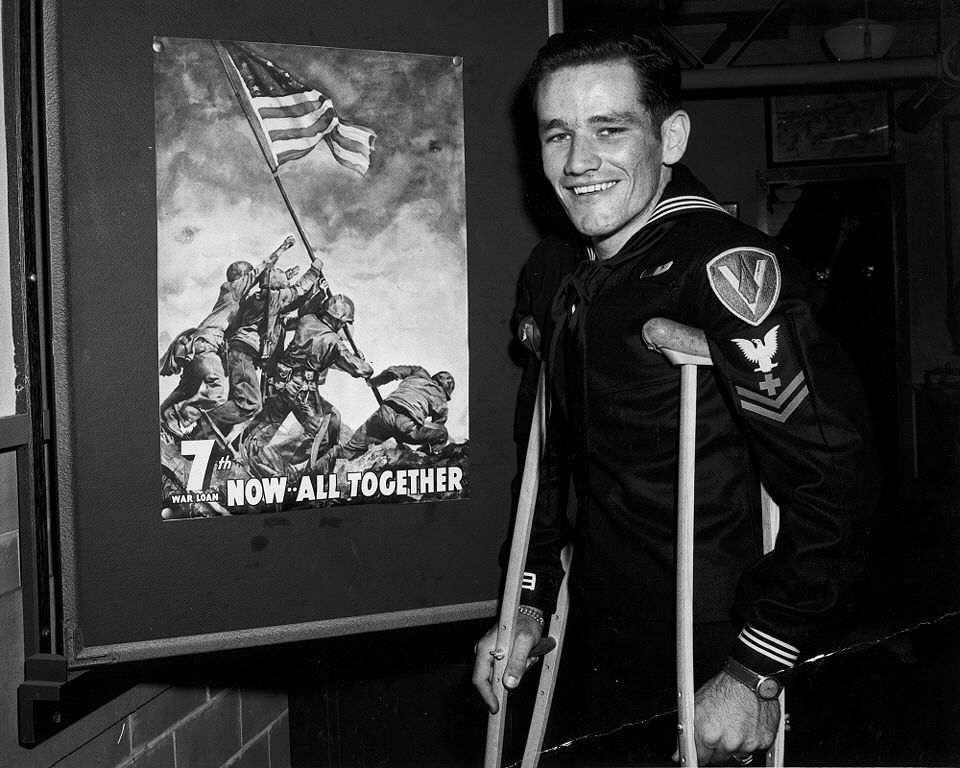 |
 |
Rank:
Date of Birth:
Date of Death:
Age:
Unit:
Cemetery: |
Pharmacist's Mate Second Class
10 July 1923, Antigo, Wisconsin
11 January 1994
70
2nd Battalion, 28th Marines
Queen of Peace Catholic Cemetery,
Antigo, Wisconsin |
| Navy Cross citation |
For extraordinary heroism in action against the enemy at Iwo Jima on Feb. 21, 1945 as a hospital corpsman attached to a Marine Rifle platoon. During a furious assault by his company upon a strongly defended enemy zone at the base of Mt. Suribachi, Bradley observed a Marine infantryman fall wounded in an open area under a pounding barrage by mortars, interlaced with a merciless crossfire from Machine guns. With complete disregard for his own safety, he ran through the intense fire to the side of the fallen Marine, examined his wounds and ascertained that an immediate administration of plasma was necessary to save the man's life. Unwilling to subject any of his comrades to the danger to which he had so valiantly exposed himself, he signaled would-be assistants to remain where they were. Placing himself in a position to shield the wounded man, he tied a plasma unit to a rifle planted upright in the sand and continued his life saving mission. The Marine's wounds bandaged and the condition of shock relieved by plasma, Bradley pulled the man thirty yards through intense enemy fire to a position of safety. His indomitable spirit, dauntless initiative, and heroic devotion to duty were an inspiration to those with whom he served and were in keeping with the highest tradition of the United States Naval Service. |
| For more information see J. H. Bradley on Wikipedia |
| Picture J. H. Bradley: |  | No copyright, see Wikipedia |
|






